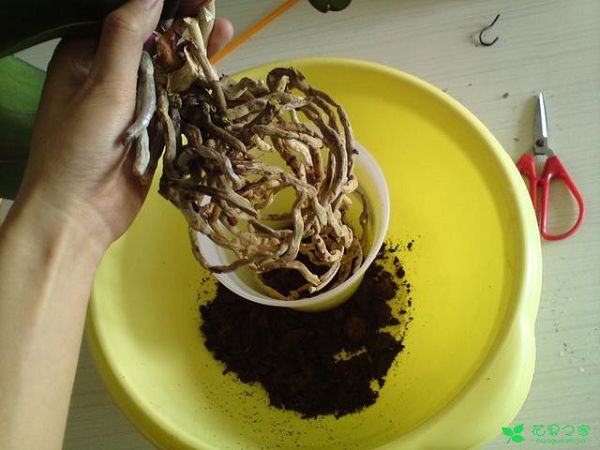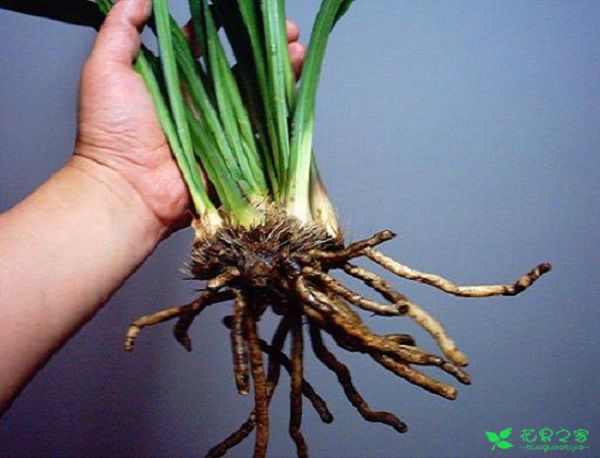If the orchids change pots like this, the pots will be full of green leaves in January.

Potted plants are like children, they need to change pots when they grow up. If they do not change pots all the time and let them grow, their root growth will be restricted. In addition, the lack of nutrients in the soil in the pots will also affect the growth of plants. Changing the plant pot at the right time is tantamount to remaking the plant back to the furnace! Today, the flower and fruit editor will teach you how to change the pot of orchids. Come and watch.
1. Draw a circle with an iron nail close to the flowerpot (as deep as possible) to facilitate the soil ball to come off as a whole.
2. After the soil ball is taken out, it is broken gently, and the root system is slowly stripped off the old soil ball. It can also be washed with water to separate the root system from the soil.
3. Carefully observe the state of the roots and remove the old and bad roots; cut off the horizontal branches, weak branches and overlapping branches on the inner side of the plant, and if the branches go to the basin directly without pruning, there will be a "latching period" (fallen leaves to adapt to the damaged roots or not sprout new branches for a long time).
4. Before putting on the basin, two tiles are stacked on the outlet of the basin bottom, which can keep the outlet unobstructed, prevent the stagnant water from rotting the root as much as possible, increase the air exchange in the basin soil, facilitate root breathing, and provide air for the plant to maintain the best growth state.
5. Spread a layer of organic fertilizer soil (or nutrient soil) on the bottom of the basin, put the pruned plant in the middle of the pot, and leave a gap of 2-3 cm between the plant and the flowerpot.
6. After completing the above procedures, pour enough root water at one time, turn the basin and change the soil.
Key points for attention: from February to March in the south and from March to April in the north, it is not watered a few days before turning the basin and changing the soil, because the basin soil is too wet, and the excessive viscosity between the basin wall and the soil is not conducive to the overall prolapse of the soil ball. Generally choose to be carried out in cloudy days or in the evening (the best continuous cloudy days after turning the basin and changing soil).
- Prev

When does the valley of the valley blossom? When is the flowering period of the lily of the valley?
When does the valley of the valley blossom? When is the flowering period of the lily of the valley?
- Next

The culture method of orchid, the introduction to orchid planting in super detail
The culture method of orchid, the introduction to orchid planting in super detail
Related
- Is the orchid suitable for indoor use? Is it good for the body?
- How to prevent the empty root of orchids?
- What to do after the crab claw orchid is withered?
- Why are the leaves of orchids always yellow? Fertilizing and watering.
- Can the root of the gentleman orchid be saved if it is rotten?
- Diagnosis and treatment of cotton-blowing beetle insects in Cymbidium
- There is a way for a gentleman's orchid to rot.
- What is the most suitable temperature and humidity for the orchid?
- How to raise a gentleman's orchid? Cultivation techniques of Cymbidium
- How to prepare the nutritive soil for the cultivation of Cymbidium

